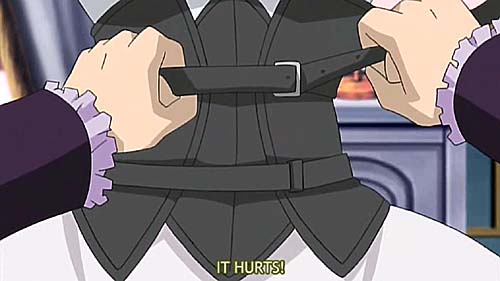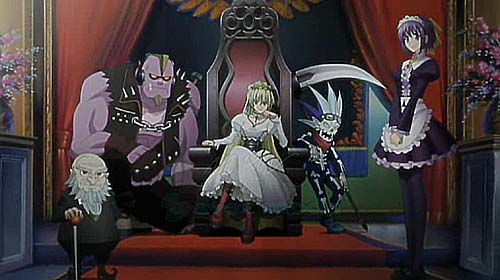28/365

Central Riverside Park.
27/365

First Christian Church II. (When you don’t have a wonderful image, play with posterization and layers and other gimmicks.)
Chuck amuck
(Via Cartoon Brew.)
Truth in advertising
The offense is slightly mitigated by the fact that the fifth season never was licensed and thus there is no legitimate region 1 release. Still, usually it’s the “marketplace” dealers who sell bootlegs, not Amazon.com itself.
Update (5/22/07): Sailor Stars is “currently not available,” and the link above returns a 404.
26/365
Notes

According to historical costumers, a properly-fitted corset is quite comfortable. Evidentally, in Foreland the craft of corsetry has sadly declined.
After the over-the-top first episode, the second episode of Murder Princess is a bit of a let-down as the former bounty hunter ((What is it with bounty hunters, anyway? I would have thought that Cowboy Bebop adequately covered the subject, but they keep turning up everywhere. Half the characters in El Cazador are bounty hunters.)) discovers the challenges of palace life. It’s still quite watchable, though, and it’s hard to dislike a series in which the good guys look like this:

25/365
A “decent” fantasy
Alex saw Tales from Earthsea and has a surprisingly positive take on it. (I don’t think he’s read the books yet.)
Grrr
You can legally download the first episode of Death Note for $2, which is not a bad deal, assuming that there is no limit on how many times you can play the file. However, as Astro discovered, if you’re on a Mac, you’re out of luck. You can only watch the show on a Windows machine. This is not mentioned on the download page; you have to do some clicking in the “support” menus to discover this. It looks like I’m going to wait a few months, or years, for the DVDs. I wonder if Viz will stick a mandatory Naruto trailer at the begining of the Death Note discs, as they do with Hikaru no Go.
24/365

Pine bark.
23/365

The mystery echinocereus. It’s supposed to be E. dasyacanthus, but the flower doesn’t match the seed list description. (This is another instance where the camera doesn’t get the color quite right, though it’s closer than yesterday’s photo. The flowers are a slightly more purplish than they appear here. This goes for the ones in the header art, too.)
22/365

There’s a wisteria vine I pass when I go to work. In spring every year it becomes a solid wall of lavender. This year, however, the late freeze killed all the buds. The vine has come back, and it has even managed to produce a few racemes, though it’s a pitiful display compared to the usual spectacle. (The camera has difficulty accurately capturing some shades; the flowers are less blue and more violet than in the picture.)
Your personal planetarium
Celestia or Stellarium. (The Macintosh version of latter requres OS 10.4, so I haven’t been able to test it.)
(Via Mark Shea.)
The horror …
The English-language dub of Sailor Moon is notorious for dumbing down and bowdlerizing the story, but it could have been worse. Much worse.
21/365

I don’t think I’ve ever posted a picture of my dulcimer. This was the eighth one I built, back in 1993. It has a cedar soundboard, sixteen treble and sixteen bass courses, and is most playable in keys with a sharp or two.



